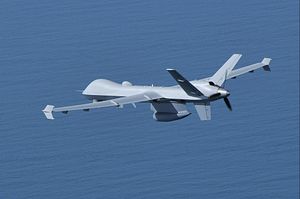This summer, Microsoft’s Innovation Center in Karachi announced that an 11-year-old boy designed a UAV that can fly to 1,500 feet and be armed with small weapons. Such developments are evidence that unmanned technologies are rapidly changing the global security environment. As such, will American policy adapt in time to shape these changes or will the United States be forced to react to the leadership of others?
Militaries around the globe are keen to acquire advanced UAV technology and will eventually do so in one of three ways: by developing them indigenously, by acquiring them from non-U.S. foreign suppliers or by purchasing them from the United States. The United States cannot stop this technological proliferation, but it can influence how UAVs are safeguarded and employed by partnering more closely with nations around the globe. The U.S. has both a national security and commercial imperative to pursue such partnerships.
UAVs are increasingly vital to defense policy and war planning as well as law enforcement, anti-smuggling, coastline monitoring and border surveillance. From Beijing to Moscow, Tehran to Istanbul, Abu Dhabi to Tel Aviv, there is a fierce competition underway to develop UAV technology and capture export markets. Like fighter aircraft cooperation in the 20th century, UAV cooperation will shape international alliances and military partnerships in the 21st century.
The United States also has a vital interest preventing UAVs from being used to deliver weapons of mass destruction. Today, U.S. policy aims to do this through a cautious interpretation of the Missile Technology Control Regime (MTCR)—a non-proliferation arrangement established in 1987 to restrict the export of WMD-capable missiles. In 1992, MTCR members decided to treat UAVs with a 500kg payload and 300km range, like ballistic missiles, based on the premise that UAVs require these features to deliver nuclear weapons.
These technical parameters are arbitrary. The 500kg payload is supposed to be a minimum size of a viable nuclear weapon. Yet, Harvard’s Belfer Center reports that the minimum weight for a nuclear device is as little as 30 kg. The range restriction is also capricious considering that basic aircraft, like blimps, can travel beyond 300 km. Whatever merit this policy had in 1992, it is illogical and self-defeating in today’s world of proliferated drones.
Nor can the MTCR guidelines credibly claim to prevent WMD employment when the regime does not restrict other methods of WMD delivery. These include all manned aircraft and artillery, as well as unconventional mechanisms like delivery by truck or container ship or through improvised nuclear devices. It was reasonable in 1987 to assume that WMDs would be delivered by missiles and similar systems, but that is not the case today, where unconventional, terrorist violence is the dominant form of warfare.
Rather than restricting UAV sales, WMD threats would be better addressed by promoting a consensus against attaching WMDs to UAVs. This is not a difficult argument to make. Only an extremely reckless government would allow WMDs to be attached to unmanned systems, given the risk of loss of control. But the best way to ensure that this view becomes the policy of foreign governments is by having the U.S. military cooperate with foreign militaries on UAV tactics, techniques, procedures and doctrine. Such cooperation would encourage end-use monitoring arrangements that prevent diversion of sensitive technology, along with other safeguards. Moreover, ensuring that the United States is the UAV partner of choice is an essential means of maintaining a global balance of military power that promotes peace and stability.
The United States also has a clear commercial imperative for expanding its UAV partnerships. As noted by the Congressional Research Service, “much new business is likely to be generated in the [UAV] market, and if U.S. companies fail to capture this market share, European, Russian, Israeli, Chinese or South African companies will.” Chinese officials publicly acknowledge that they are “taking advantage of the hole in the market” created by America’s restrictive export policy. China is now able to fill that hole with UAVs that look remarkably similar to America’s MQ-1B Predator and MQ-9 Reaper (so close that some might wonder where China got the designs).
Indian UAV demand is a prime example of what American industry has to lose. The Indian Ministry of Defense reportedly has plans to acquire 3 billion USD worth of UAVs over the next decade. For the United States to maintain its dominance in UAV technology and production, it cannot afford to surrender this kind of market opportunity to foreign industry. Today, the United States is the undisputed leader in UAV design and production, but this isn’t guaranteed to last. A forward thinking approach that reflects today’s realities around UAV capability and demand, which helps engage more deeply partner countries globally, is both logical and essential to U.S. interests.
Benjamin Schwartz served as an adviser for Countering WMD in the Office of the Secretary of Defense and is the director for defense and aerospace at the U.S.-India Business Council.
































